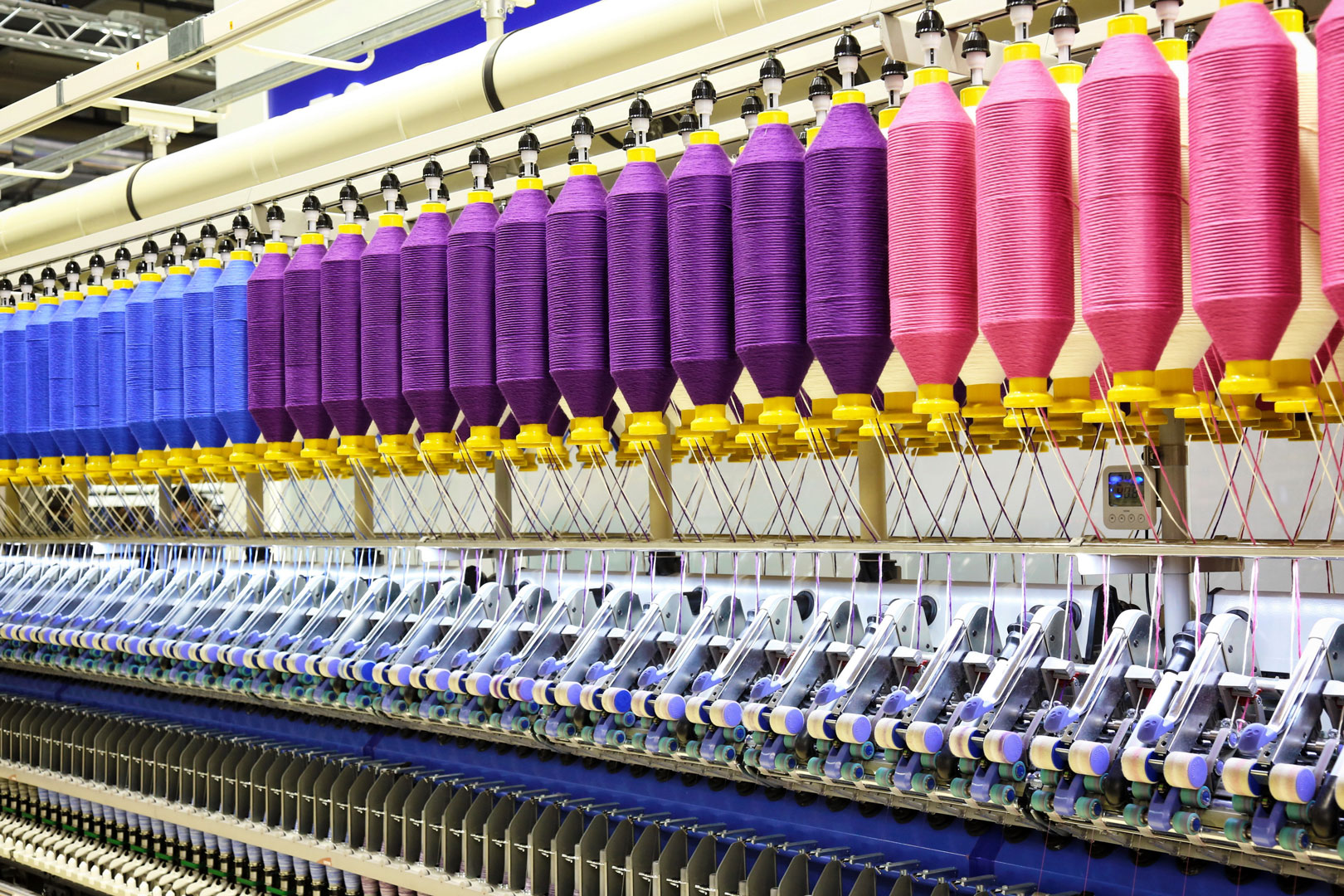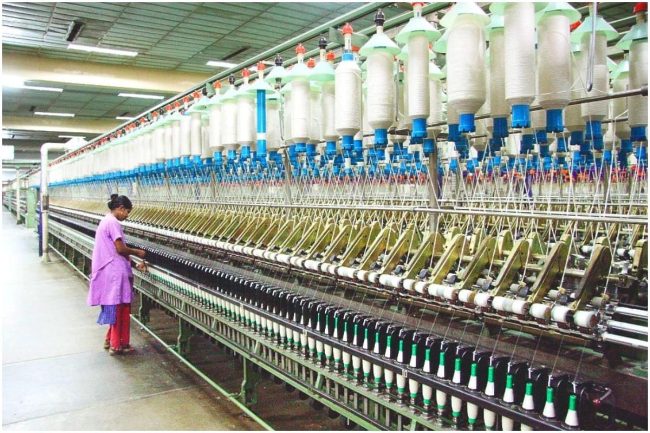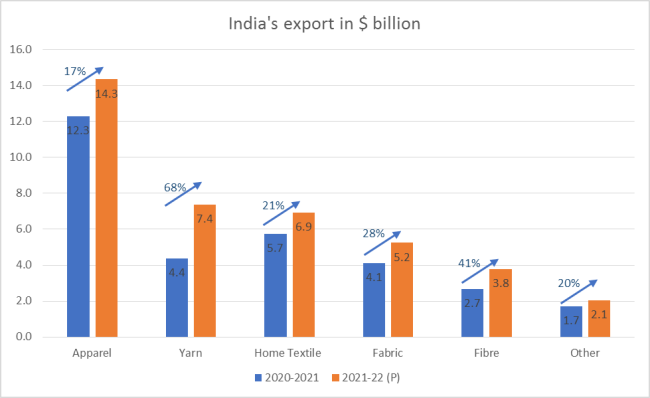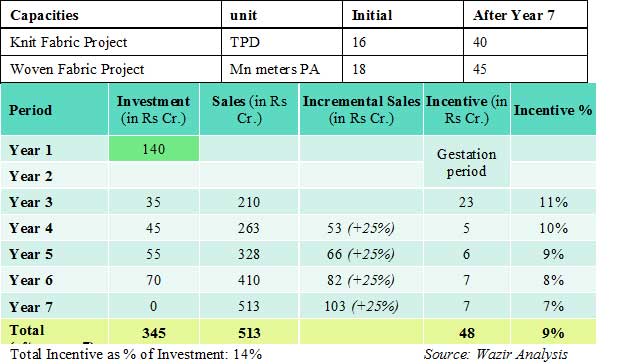
New growth avenues for Indian textile industry
While India is going to export approximately $ 40 billion to other countries in FY 2021-22, the imports are expected to increase slightly in 2021-22. In 2021, the Government of India (GoI) introduced the Production Linked Incentive (PLI) scheme and MITRA Parks to give a boost to the Indian textile manufacturers. Sanjay Arora explores the possible opportunities that lie ahead in the Indian textile industry
The post COVID era has proven to be a boom for manufacturing industries, especially the textile industry. As the lockdown has been lifted in most parts of the world, consumers are back in the market. Buyers have started placing big orders to meet the increasing demand. Moreover, as the buyers are shifting from China to India. Post-COVID, India has a huge scope to capitalise on this opportunity and become a global champion in the textile industry.
The Indian textile and apparel market are still cotton-dominated, while the global market is slowly shifting towards man-made fibres due to value and functionality benefits. Synthetic textile is becoming more popular because of its low cost and better functionality. Natural fibers like cotton are not able to meet the rising demand-supply gap. Hence there has been a significant shift towards synthetic options. Recently the government of India has also taken initiatives to promote man-made fiber and technical textile segments by introducing PLI scheme for investments. One more initiative taken by the government of India includes the establishment of 7 MITRA Parks. This project aims to place India prominently on the global textiles map. With these points in mind, let’s jump in to explore the possible opportunities that lie ahead in the Indian textile industry.

India’s export
Currently, India is the 6th largest textile and apparel exporter after China, Vietnam, Germany, Bangladesh, and Italy. The Indian textile and apparel export reduced by 19.4% in 2020. In 2019 Indian textile and apparel export was $ 36 billion, which has now reduced to $ 29 billion in 2020. The textile and apparel industry contributes to about 4% of the $ 2 trillion Indian economy.
Apart from its financial scale, the industry has vast importance. It employs a large population of the country after agriculture and holds the title of second largest employment provider after agriculture.
In 2020, India exported a total of $ 16.24 billion of natural fibre textiles and $ 13.36 billion of man-made fibers. Apparel dominates the exports with a value of $ 12.22 billion, followed by fabric with a value of $ 4.09 billion. Overall the exports have slightly declined in 2020 because of the Covid impact on the textile industry. Also, there were better price and scale realisation provided by other competing nations such as China, Vietnam, etc.
In FY 2021-22, India is going to export approximately $ 40 billion to other countries. The export of yarn is expected to grow by 68% in FY 2021-22 from last year, Also, the export of fibre is expected by 41% as seen in the Figure 1.

Figure 1: India’s export (value in $ billion)
Source: UN Comtrade & Wazir Analysis
The top 10 export commodities of India and their percentage share are shown in Table 1.
Table 1: Top exported commodities by India
| Hs Code | Description | Sum of 2020-2021 Trade Value (US$B) | Trade Share |
| 5205 | Cotton yarn – not sewing thread | 2.7 | 9% |
| 6204 | Women’s or girls suits (not knit) | 2.0 | 7% |
| 6109 | T-shirts, singlets, tank tops | 2.0 | 7% |
| 6304 | Furnishing articles of textile materials | 1.9 | 7% |
| 5201 | Cotton yarn not carded or combed | 1.8 | 6% |
| 6302 | Bed linen, table linen toilet linen & kitchen linen | 1.6 | 5% |
| 5208 | Woven cotton fabrics | 1.0 | 3% |
| 6203 | Men’s or boys suits | 0.9 | 3% |
| 6305 | Sacks & bags of textile material for packing goods | 0.9 | 3% |
| 6111 | Babies garments & accessories | 0.8 | 3% |
Source: DGCIS & Wazir Analysis
As it is self-evident from the data that, cotton yarn holds a significant share of 9% along followed by the womens suits, tshirt & furnished artyicles with 7% share each among all the exports. Other top exported apparel commodities include bed linen, mens suits, shirts, etc.
India has a stronghold in apparel T-shirts and can be consolidated going further along with expanding to globally traded product categories where India has a marginal share. India holds the potential to become the next best option for manufacturers after the Covid-19. Buyers are shifting towards India because of the presence of the entire value chain, cheap labour, and better economic policies provided by the government of India to promote the trade of synthetic textiles and apparel.
India’s import
India’s textile and apparel imports were $ 5.9 billion in 2020-21. However, they are expected to incline by around 28% to reach $ 7.6 billion in 2021-22 (refer Figure 2). The imports of textile and apparel are expected to grow at a CAGR of approximately 15% to reach $ 15.2 billion by 2025-26.

Figure 2: India’s import (value in $ billion)
Source: UN Comtrade & Wazir Analysis
In 2020, India imported a total of $ 5.9 billion of the apparel and textile sector, from which fabric constitutes 29% of the total import. It is expected that in FY 2021-22, there will be an incline of 22% to reach $ 7.6 billion.
In 2020-21, India had imported a total of $ 1.4 billion of natural fiber textiles and $ 4.4 billion of man-made fibers. Fabric dominates the imports with a value of $ 1.7 billion, followed by yarn with a value of $ 1.3 billion. Overall, the imports have slightly increased in 2021-22 because of the reduction Covid impact on textile industry. Also, there were better price and scale realisation provided by other competing countries which may lead to an increase in more imports.
In FY 2021-22, India is going to import approximately $ 7.5 billion from other countries. The import of fibre is expected to grow by 42% in FY 2021-22 from last year. Also, the import of yarn is expected by 36% as seen in Figure 2.
The top 10 import commodities of India and their percentage share are shown in Table 2.
Table 2: Top imported category by India
| HS Code | Description | Sum of 2020-2021 Trade Value (US$B) | Trade Share | |
| 5402 | Synthetic filament yarn | 0.5 | 8% | |
| 5201 | Cotton | 0.4 | 6% | |
| 6006 | Knitted or crocheted fabrics | 0.3 | 5% | |
| 5903 | Coated textile fabrics | 0.2 | 4% | |
| 5510 | Artificial staple fibre yarn | 0.2 | 3% | |
| 5603 | Nonwovens fabrics | 0.2 | 3% | |
| 6307 | Made-up articles of textile materials | 0.2 | 3% | |
| 5407 | Woven fabric of synthetic filament yarn | 0.2 | 3% | |
| 5509 | Synthetic staple fibre yarn | 0.2 | 3% | |
| 5403 | Artificial filament yarn | 0.2 | 3% |
Source: DGCIS & Wazir Analysis
Synthetic filament yarn hold a major share in the overall Indian imports by 8% and have grown by a CAGR of 20.41% over 4 years. However, knitted hosiery and footwear has seen the highest CAGR of 91.34% during the same period. Other top imported apparel commodities include jackets, trousers, shirts, blouses, shorts, dresses, etc.
PLI support for textile sector by GoI
The Government of India (GoI) has recently introduced the Production Linked Incentive (PLI) scheme with a budget outlay of Rs 10,683 crores. This scheme aims to provide a boost to the in-house manufacturing of man-made fibers and technical textiles segments. The product Selected categories include selected HS Codes at 8-digit level – 50 HS Codes of MMF Apparel, 42 HS Codes of MMF Fabric, 91 HS Codes of Technical Textiles.
The scheme aims to place India a global champion in the synthetic textile segment by offering straightforward incentives on turnover generation. The investment can be made for garments, fabric or an integrated setup. There are two brackets of investment, Rs 100 crore brackets with a turnover target of Rs 200 crores and Rs 300 crore brackets with a minimum turnover target of Rs 600 crores. The scheme will be for a fixed period of five years after an initial gestation period of 2 years (i.e. valid till FY 2029-30). The first incentive will be given on performance in 2024-25.
As stated in the scheme, the major focus is on the man-made fiber segment to enable the Indian textile and clothing sector to gain a dominant status in the global trade of synthetic textiles. Currently, Indian production and export of textile and clothing are largely cotton-based. Realising the global shift from cotton to synthetics, the new scheme is likely to help cover this gap so that India remains internationally competitive.
Illustrative Example: PLI incentive for an integrated knit project
Below is an illustrative example of an integrated knit project in the PLI scheme. The figure explains the year-wise target for turnover under different investment brackets along with incentives available each year for 5 years duration.
For the investment of Rs 300 crores, here taken an investment of Rs 414 crore, including an initial 39 TPD capacity setup for knit fabric and 500 machine setups for apparel. Total sales generated in 7 years (includes 2 years for Gestation period) will be around Rs 1,500 crores, for which the total incentive that can be claimed is 13% up to Rs 200 crores. Under this bracket, the scheme allows claiming up to 29% of the investment as reimbursement.
| Capacities | unit | Initial | After Year 7 |
| Knit Fabric Project | TPD | 45 | 110 |
| Woven Fabric Project | Mn Mtrs PA | 50 | 125 |

For the investment of Rs 100 crores, here taken an investment of Rs 136 crore, which includes an initial 11 TPD capacity setup for knit fabric and 500 machine setups for apparel. Total sales generated in 7 years (includes 2 years for gestation period) will be around Rs 577 crores, for which the total incentive that can be claimed is 9% up to 51 crores. Under this bracket, the scheme allows claiming up to 19% of the investment as reimbursement.

Please note both the projects are subjected to further investment year on year. The total investment for the Rs 300-crore bracket, in the above example, is Rs 696 crores, whereas for Rs 100 crore bracket is Rs 267 crores.
On October 21, 2021, the Ministry of Textiles issued a Notification to establish 7 PM Mega Integrated Textile Regions and Apparel (MITRA) Parks. This project aims to create an Aatmanirbhar Bharat and place India prominently on the global textiles map. PM MITRA Parks project assists India in meeting the United Nations Sustainable Development Goals by constructing integrated large-scale and sophisticated industrial infrastructure facilities for the whole textile value chain. It will save logistical costs and boost Indian textiles’ competitiveness. The Initiative will assist India in attracting investments, increasing job creation, and establishing a solid position in the global textile industry. These parks are intended to be positioned in areas that have the natural strength for the textile industry to thrive as well as the essential links to succeed.
The 7 PM Mega Integrated Textile Region and Apparel (PM MITRA) Parks will be established at greenfield/brownfield locations around the United States. The GOI Development Capital Support for a greenfield PM MITRA park would be 30% of the project cost, with a limit of Rs 500 crores. After evaluation, Development Capital Support at 30% of project cost of balance infrastructure and other support facilities to be created, with a ceiling of Rs 200 crore. The state government will provide 1,000 acres of land to establish a world-class industrial estate. A competitiveness incentive support (CIS) of Rs 300 crore will also be granted to each PM MITRA park for the early creation of textile manufacturing units. Such assistance is critical for a new initiative that has yet to break even and needs assistance until it can scale up production and prove its viability. There are three proposed greenfield parks and four proposed brownfield parks. The PM MITRA Park will be built by a Special Purpose Vehicle controlled by the Government of India & State Government. The Master Developer will build the Industrial Park and help with infrastructure, commercial development, and Competitiveness Incentive Support.
Forecast for 2022
There is confidence that 2022 will stabilise India’s textile sector with cotton spinning and apparel trade segments faring admirably. Cotton spinning and apparel exports could increment by 15% to 20% in the 2022 financial year. Textiles and homegrown apparel sectors could grow by 30% to 35% and 35% to 40%, respectively.
The global exhaustion of natural resources, quick changes, unstable climate patterns, expanding population, knowledge of organic products, and technological advancements are factors driving the textile sector’s decisions. Asia has just recently begun transitioning from being the world’s largest textile manufacturing and supplier to the world’s largest textile consumer. Natural fibers are expected to catch customers’ attention since garments created from them are calming and result in less chemical waste. Cotton fibre will be one of the most popular fabrics in the future.
When the textile industry plans for the future, it is motivated by the instinct to survive in an ever-changing environment. Plans also lead the textile industries to explore the markets that will dominate the industry in a decade. Fortunately, sustainable strategies that assist organizations in determining the future course of action have become an integral element of the textile sector’s routine decision-making.
The textile sector is expected to attract over $120 billion in investment by 2024-25, creating approximately 35 million extra employment in the process. Exports are expected to increase from $39 billion to $300 billion by 2024-25. With the rise of the textile industry, the size of the textile machinery sector is expected to double to Rs 45,000 crores in the next seven years from the current Rs 22,000 crores, owing to new projects in the pipeline and an emphasis on establishing textile parks. The textile equipment business may benefit from the sector’s expansion and forthcoming new projects, as well as the government’s intention to develop textile parks. The sector’s market size is expected to quadruple in the next seven years, from Rs 22,000 crores to Rs 45,000 crores.
The Introduction of PLI scheme and MITRA scheme will place India prominently on the global textiles map. China has been able to maintain consistent growth. The Indian textile industry has yet to reach the level of the Chinese textile sector in the global market. However, it is progressively gaining that place in the worldwide market.
About the author:
Sanjay Arora is the Business Diretor of Wazir Advisors. He is a certified Internal Auditor QMS – ISO 9001-2000 with 24 years of experience in business consulting, operational excellence, government advisory services, customer relationship management, production planning, process improvement and project management across the textile industry. Sanjay Arora has worked with premier textile and polyester manufacturing industry in India at various levels. He has been a speaker at various national and international textile & apparel conferences/seminars e.g. CCI, CII, FICCI, TAI, etc. He can be reached on Email: sanjay@wazir.in



